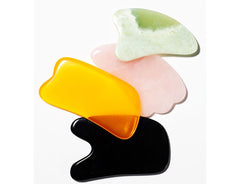Top 12 Essential Oils For Joint Pain, Arthritis And Inflammation

Aches, joint pain, and inflammation affect everyone at some point in life. Whether they are temporarily or you have to deal with them on a regular basis, they are no fun. It is natural to seek relief for the discomfort. You can go for the conventional treatment route, especially if the joint pain or inflammation is caused by a medical condition but you can also opt for natural remedies such as essential oils. While for diagnosed medical conditions, it is recommended to use essential oils only as a complementary therapy, for less serious problems, you can rely entirely on essential oils to reduce joint pain and inflammation. Not only are essential oils capable of alleviating or easing joint pain and inflammation but they will also bring you other health benefits.
If you want to regain comfort and ease your pain and inflammation, discover the best essential oils for joint pain and inflammation. Some of them can help relieve the tension and stiffness, others can reduce swelling but all of them can have a positive impact and get rid of your pain.
The Best Essential Oils For Joint Pain And Inflammation
Before we dive in, here are our top 5 picks for oils that can help joint pain and inflammation:
- Lavender essential oil
- Eucalyptus essential oil
- Rosemary essential oil
- Peppermint essential oil
- Our own calm oil blend (popular)
To manage discomfort, pain, and inflammation, you can use a number of different essential oils. However, let us say that it is important to seek medical attention if you are injured, diagnosed with a medical condition that can cause these symptoms or if you don’t know what causes the pain and inflammation in the first place.
Now, without further ado, let’s dive into the world of essential oils for joint pain and inflammation.
Lavender Essential Oil
You can find lavender essential oil in many homes and in many places that strive to create a calming and relaxing environment. That’s because lavender essential oil can reduce stress and anxiety. But that’s not the only thing this potent oil can do. Since it contains anti-inflammatory compounds, lavender essential oil can reduce inflammation around joints.
Eucalyptus Essential Oil
Due to its healing properties, eucalyptus essential oil can provide relief for joint pain and muscle pain. The refreshing and cooling effect of eucalyptus essential oil contributes to its anti-inflammatory and antispasmodic properties, reducing stress and providing pain relief.
Rosemary Essential Oil
Because it contains powerful antioxidants and because it has pain-relieving and anti-inflammatory properties, rosemary essential oil is another excellent choice for those who experience discomfort due to inflammation or joint pain.
Ginger Essential Oil
Ginger essential oil contains zingibain, an anti-inflammatory compound that reduces swelling, inflammation, pain, and stiffness in muscles and joints. Due to these properties, ginger essential oil can significantly reduce pain and improve mobility.
Chamomile Essential Oil
Chamomile flowers have many uses. You can turn them into tea and use them for cosmetic purposes or for alleviating fever symptoms. When turned into an essential oil, chamomile can relieve joint pain. Since it also works as a sedative, chamomile essential oil is great for calming the nervous system, facilitating a restful sleep.
Marjoram Essential Oil
Marjoram essential oil was used in traditional medicine to treat sprains, swelling, stiffness, and spasms. That’s because marjoram has wonderful analgesic, antibacterial, and antispasmodic properties. You can use a pure marjoram essential oil for reducing joint and muscle pain or you can use a blend such as Renewed Calm Blend that contains a mix of marjoram, lavender, Red Mandarin and Mandarin Petitgrain. This is a great blend for minor discomfort because it not only helps with the pain but it also relaxes your muscles and helps you to get a better night’s sleep.
Peppermint Essential Oil
Peppermint is a hybrid mint plant that has been used for thousands of years for joint pain, aches, and inflammation relief. It is actually one of the oldest medicinal plants in the world and it is highly effective for reducing joint pain and inflammation because it contains menthol. Menthol acts as a cooling agent that works to ease discomfort, tension, and pain. Using peppermint essential oil topically can reduce joint pain and inflammation very fast.
Thyme Essential Oil
Just like peppermint, thyme has been used for thousands of years in traditional medicine, especially as an antidote for venom and poison because it has antiseptic properties. Thymol, the main compound of thyme, can relieve both swelling and inflammation. You can use thyme essential oil for joint pain and joint inflammation but also for pain and inflammation associated with dysmenorrhea.
Frankincense Essential Oil
Derived from Boswellia tree, frankincense essential oil works as a great remedy for discomfort and stress. If you apply it topically, diluted with a carrier oil, frankincense essential oil can reduce pain and discomfort. But you can also diffuse it to improve your sleep.
Lemongrass Essential Oil
Very popular in Ayurvedic medicine, lemongrass essential oil is oftentimes used for treating arthritis symptoms, such as joint pain and inflammation. Lemongrass has astringent properties, which means when the oil is absorbed by the body it can draw excess fluid from body tissue, reducing inflammation and improving mobility.
Wintergreen Essential Oil
Made from the leaves of a North American tree, wintergreen essential oil have been historically used in North America for rheumatism, back pain, joint pain, and headaches. The leaves of the wintergreen tree contain methyl salicylate, a compound that has similar qualities and properties as aspirin, which makes wintergreen essential oil effective for easing joint and muscle pain.
Cayenne Pepper Essential Oil
Cayenne pepper contains capsaicin, an active ingredient with analgesic and anti-inflammatory properties. The same properties can be found in cayenne pepper essential oil, which makes this oil perfect for those who experience inflammation or joint pain.
Recap & How To Use Essential Oils For Joint Pain And Inflammation - Safety And Precautions
Quick recap, check these oils out:- Lavender essential oil
- Eucalyptus essential oil
- Rosemary essential oil
- Peppermint essential oil
- Our own calm oil blend
Since all the essential oils for joint and pain inflammation mentioned above are highly potent, it is important to know how to use them properly.
First of all, before considering applying these essential oils topically, you should do a patch skin test to be sure you are not prone to irritation. Second of all, make sure you always dilute the oils. For diluting, you need a carrier oil. Here you have a few options – jojoba oil, hazelnut oil, coconut oil, and even olive oil. To dilute the essential oils for joint pain and inflammation, you have to mix 10 drops of the essential oil of your choice with a teaspoon of carrier oil. Once you do that, it is safe to massage the oil mixture into your skin to relieve inflammation and joint pain.









